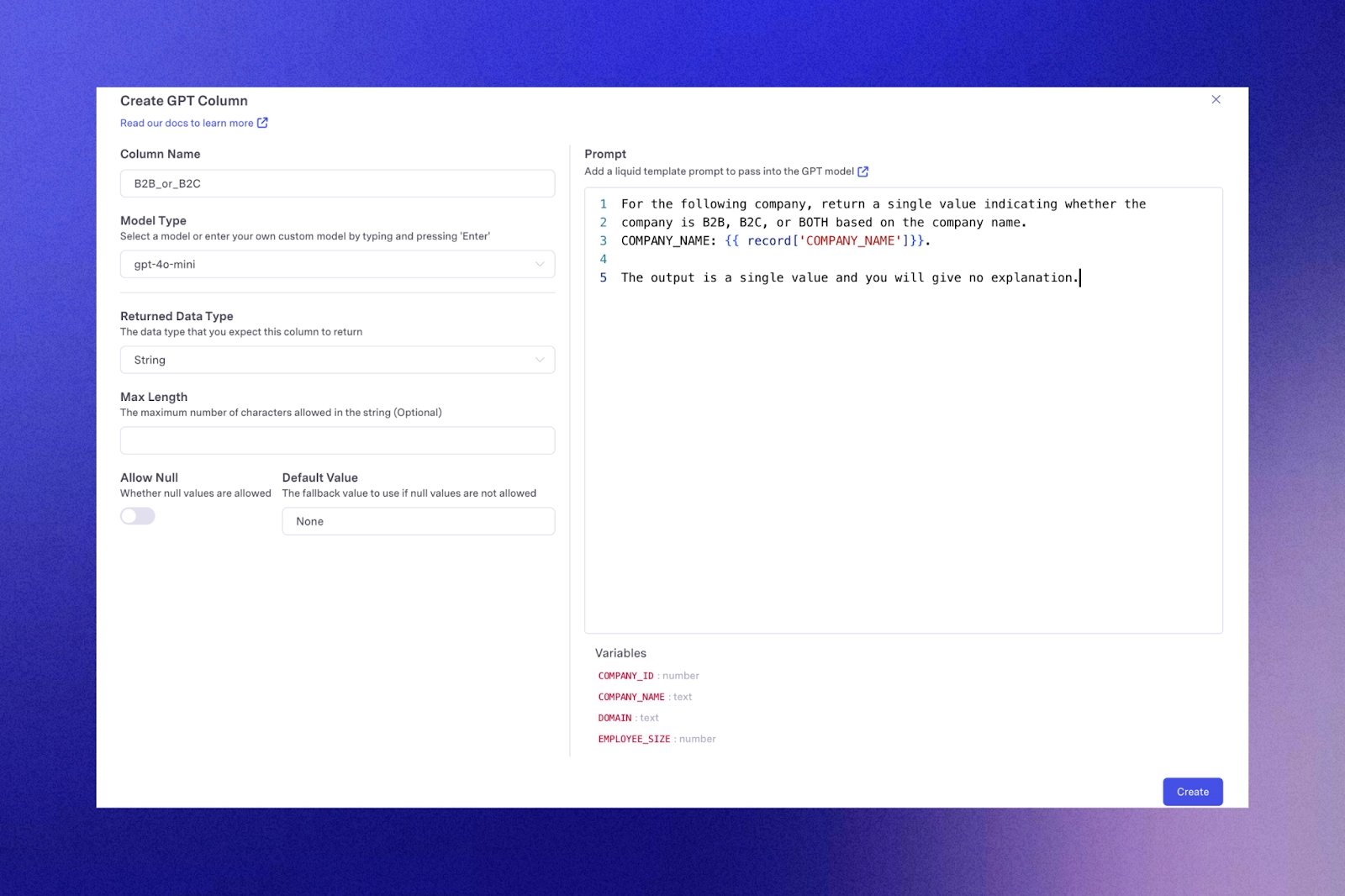Today, we are bringing AI capabilities into your datasets with AI Columns, a tool that allows Census users to enrich and enhance data before they sync. AI tooling has the potential to simplify complex tasks, to remove the code barrier from technical work, and automate away manual, repetitive work. And we’re bringing that capability directly into our dataset UI.
AI Columns takes aim at the work data engineers hate. For example, cleaning up records using regex. AI Columns allows you to leave that complexity in the past and clean records in a fast, accurate, no-code interface.
When we first discussed bringing AI into Census, we agreed that we didn’t just want to build another chatbot. But we didn’t want to automate away the important strategic work either. Our philosophy on the value that AI can add to Census is this:
- To sync with confidence, you need clean, structured data.
- Getting clean, structured data involves a lot of tedium - enriching, deduping, and last mile transforms
- Saddling data teams with tedious, manual tasks slows down the business and takes attention away from big, strategic data projects
What are AI Columns?
AI Columns are an LLM-based computed column that sits directly within our datasets UI. They are powered by Open AI and allow you to bring your own API key to stay in complete control. To use AI Columns:
- AI Columns allow you to write a liquid template prompt to Open AI's LLM. The model will output a result as a new column in your dataset.
- Stay in control of the LLM by defining default values and validating results before your sync.
- Write these columns back to your warehouse to power activation or BI analysis.

How can AI Columns make data work easier?
Categorize data to build more complete records
AI Columns can categorize data to allow for more effective analysis or segment-based syncing. Answering categorization questions at scale can be a massive headache for data teams and while business users would benefit from having these answers, they generally don’t make it onto the priority list. AI Columns takes the tedium out of these asks, allowing you to deliver data in a usable format in seconds.
- Define: Pull in a company description column and ask the LLM to output whether it is a B2B or B2C company.
- Prioritize: Sort tickets or email responses by sentiment to prioritize which customers are most in need of a response
- Segment: Assign a persona to a user or lead to determine which nurture sequence they are a match for or which PLG playbook to run
Extract and enrich without the cost
Because AI Columns have access to the wealth of general knowledge that Open AI’s LLM, you can now perform last-mile enrichments directly from Census. Getting good account intelligence is a major undertaking. That’s why Zoominfo has a market cap of over $11 billion. But AI Columns can give you meaningful account intelligence at a fraction of the cost, and with no implementation time.
- Growth Planning: Ask the LLM to scrape a company’s website to define its industry or sub-industry to analyze your next big bet - without relying on incomplete or low quality SFDC enrichments.
- Lead Scoring: Pull in a list of technologies that a company uses by scraping job descriptions posted on their website. Bring these platforms in as a new column to run analysis on whether they are technologically mature enough to make a good lead
Summarize complex insights
AI Columns can merge many signals into insights without a lengthy analysis process or the need to write a bespoke model every time.
- Plain text to data: Classify user-entered text from attribution surveys or NPS score feedback
- Calculate readiness: Determine whether a user has enough product usage to run a PLG playbook based on best practices - without creating a bespoke model
Clean data painlessly
No one ever got promoted for removing special characters from hastily-entered Salesforce records. So why should you have to do it? AI Columns can automate away the tedium involved in cleaning data.
Get started with AI Columns
AI Columns are free to use until 2025. Connecting your Open AI key to Census may incur outside costs.
To get started with AI Columns, check it out in Census or read more about how they work in our documentation.
Keep an eye out for more AI features including the ability to select additional LLMs from Anthropic, Mistral, and even a bring your own model option.


















